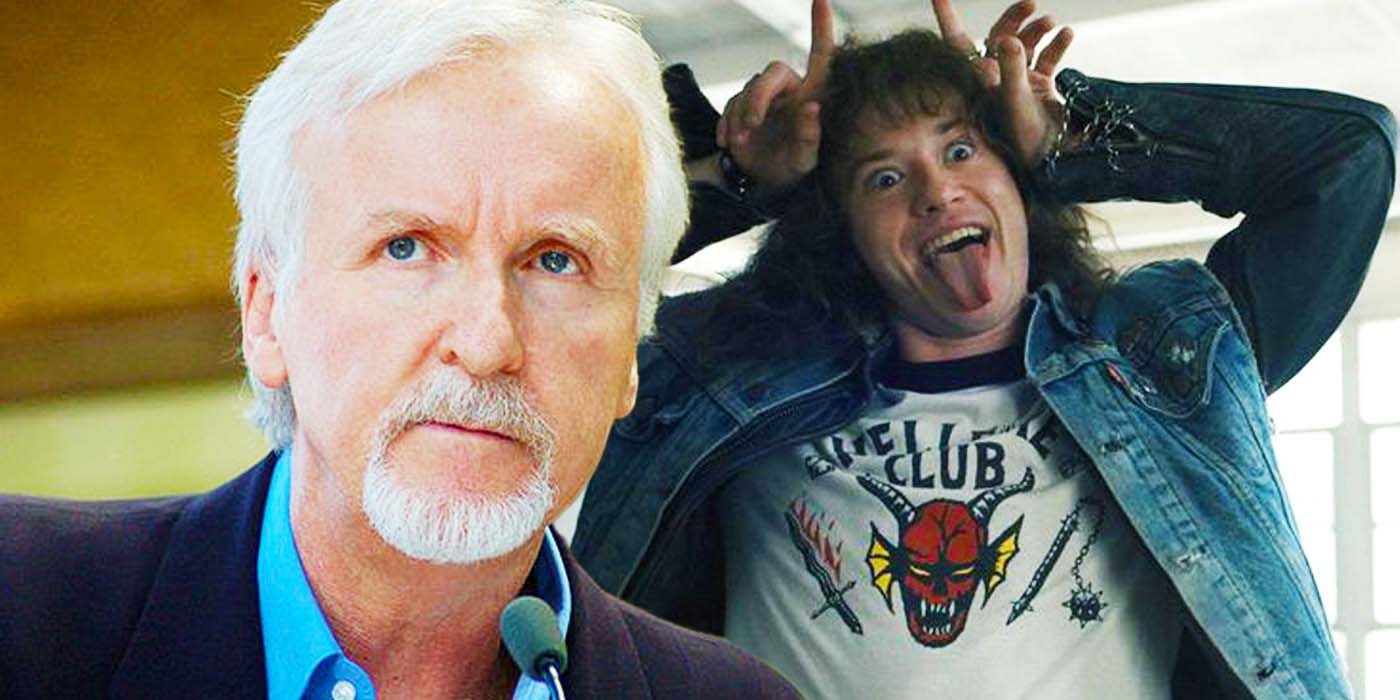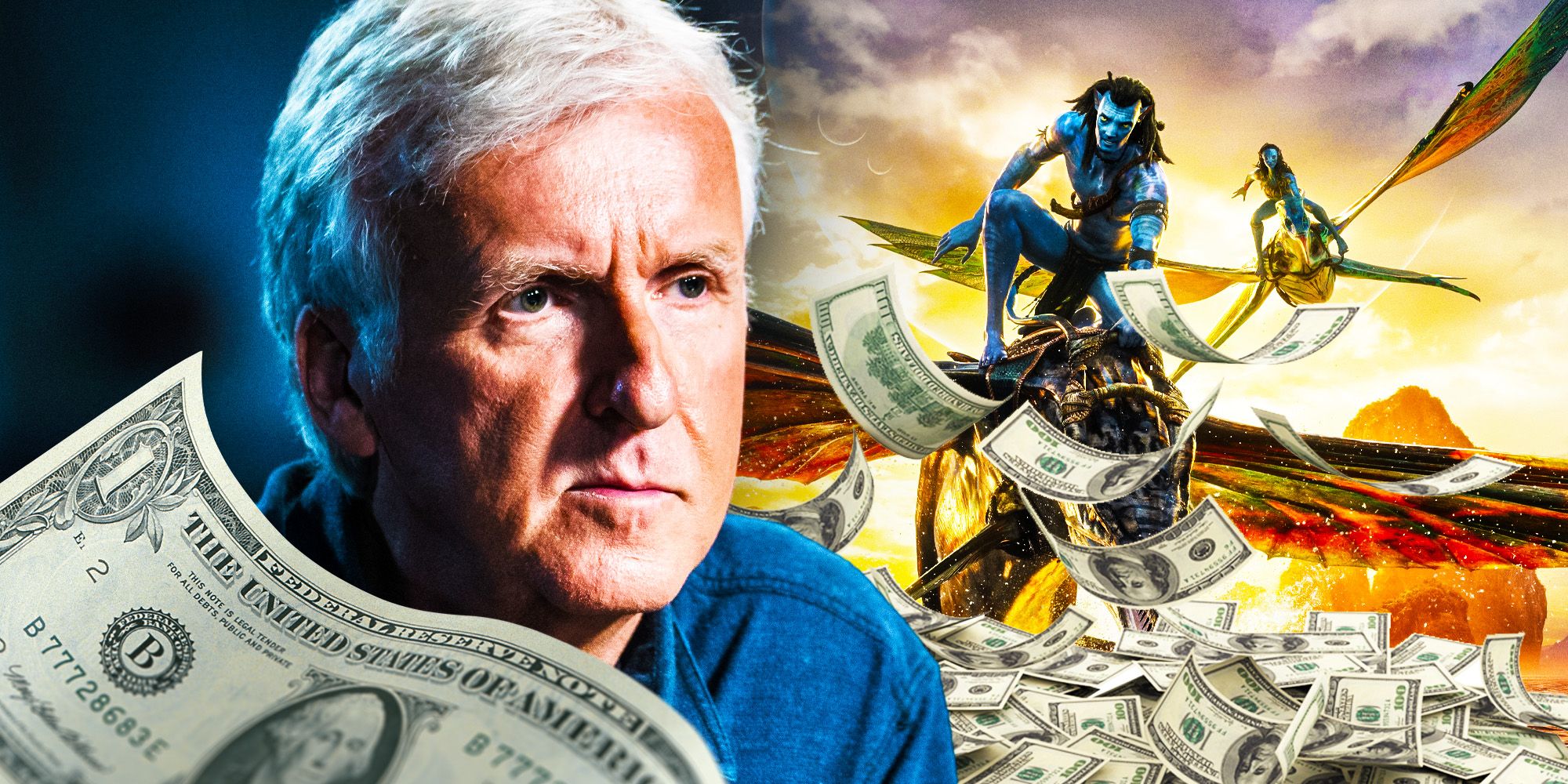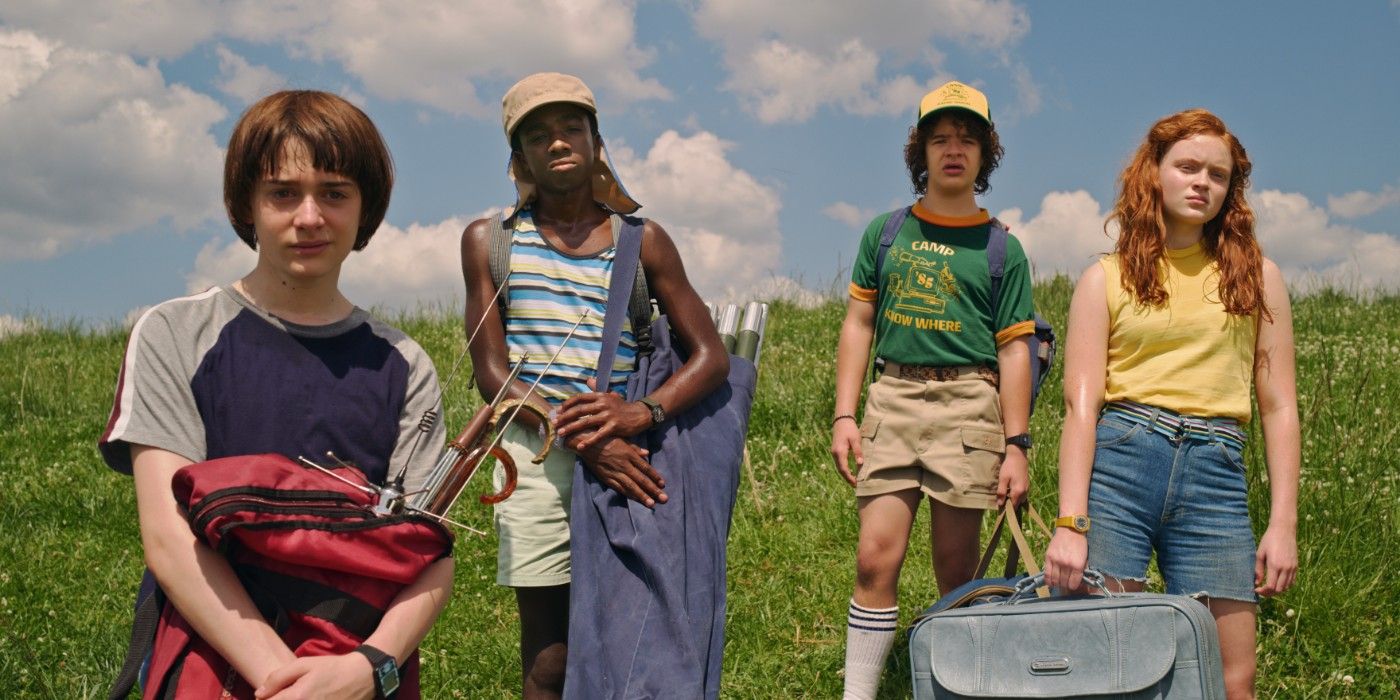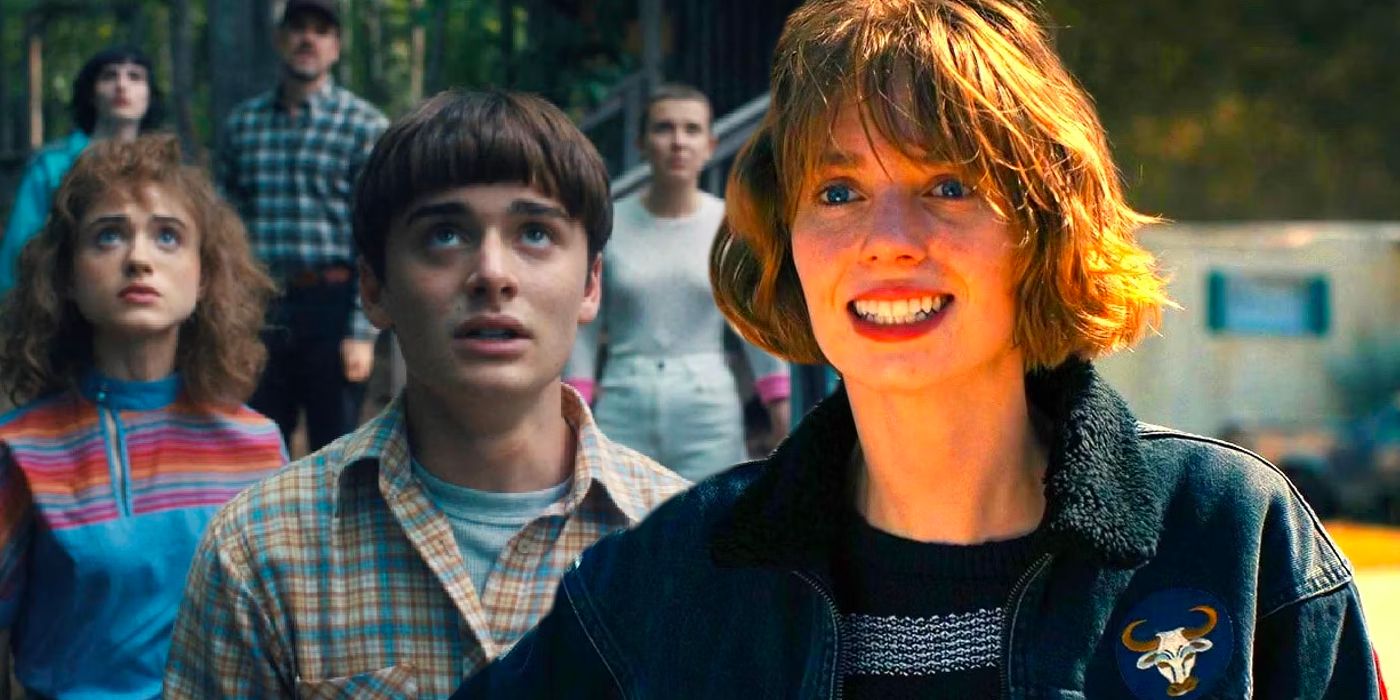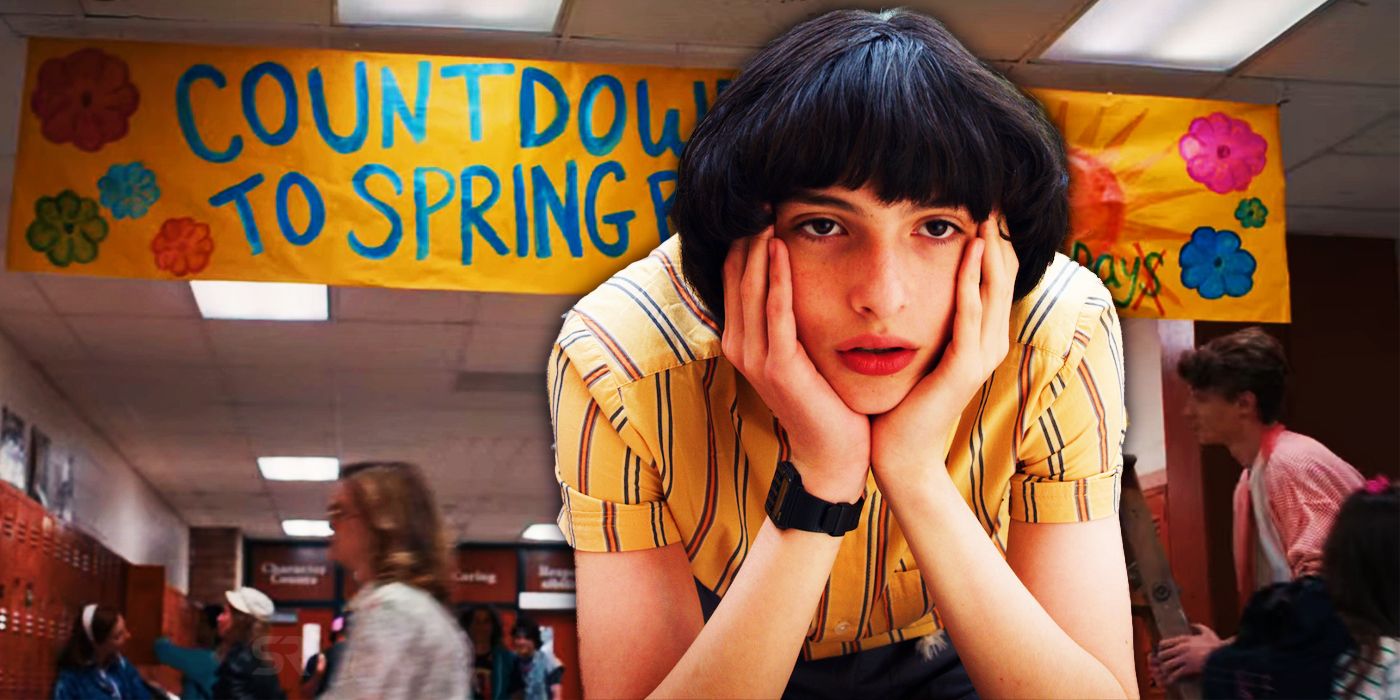While Avatar creator James Cameron didn’t mince his words about the timeline problems that Stranger Things faces, the blockbuster veteran is right to point out the show’s primary problem. Stranger Things was originally conceived as a limited series, and the Netflix show was once planned to have ended with Eleven’s heroic self-sacrifice in the season 1 finale. When the creators of Stranger Things instead opted to expand the story further, they accidentally opened its production process up to a problem that has plagued teen-centric movies and television shows for decades, as pointed out by James Cameron in a recent interview with Entertainment Weekly.
The Avatar filmmaker and blockbuster legend said that he filmed Avatar 3 and Avatar 4 concurrently with Avatar: The Way of Water because he didn’t want to have the problem that plagues Stranger Things, wherein characters stay the same age even as their actors grow noticeably older. Speaking specifically of Avatar: The Way of Water’s Spider actor Jack Champion, Cameron noted that the young star was moving through puberty during production and could not have looked the same in each movie if entire years elapsed between shoots. This issue has proven a problem for Stranger Things, but the show’s fifth and final season might have a solution for the conundrum.
What James Cameron Said About Stranger Things
After explaining his decision to shoot the Avatar sequels back-to-back, Cameron offered an example of a show where aging actors made the milieu less believable. Per Cameron, the sequels needed to be shot concurrently “Otherwise, you get–and I love Stranger Things–but you get the Stranger Things effect, where they’re supposed to still be in high school [but] they look like they’re 27. You know, I love the show. It’s okay, we’ll suspend disbelief. We like the characters. But, you know.” Cameron is correct, with Stranger Things couple Nancy and Jonathan being around 17-18 in season 4, despite the duo being played by 27-year-old Natalia Dyer and 28-year-old Charlie Heaton respectively.
Cameron Is Right—Stranger Things Struggles With Aging
Stranger Things has historically struggled to cover up the aging of its actors and Cameron is right to cite the show as an instance of this issue, especially since comparable Netflix hits like Riverdale don’t suffer nearly as much with the same problem. Since Riverdale is a campier, sillier series (and, vitally, most of its stars were already too old to play teenagers by the start of season 2), its tone makes this easier to excuse. In contrast, Stranger Things relies on its characters feeling grounded and relatable since the sci-fi situations that they find themselves in are so far-fetched, and their age failing to align with their appearance can make this tricky.
This is a big problem in the bigger, broader, sillier Stranger Things season 3, where the lovable kids of season 2 were suddenly seemingly in their late teens (and acting like it) even though only a matter of months passed between seasons in-universe. Scenes like Will voicing his frustration at his friends caring about girls and forgetting their love of Dungeons and Dragons overnight would have been a lot more impactful and poignant if he wasn’t correct. The group did seemingly change their interests, personalities, and height over one unseen semester, because their real-life actors aged three years between seasons 2 and 3.
Stranger Things 4 Improved This Problem
Much of the endlessly delayed Stranger Things season 4 was spent undoing the problems caused by season 3 and, fortunately, part of this effort included addressing the aging of the heroes. Much like season 4 undid David Harbour’s (and Hopper's) action-hero transformation in Stranger Things season 3, the show’s long-awaited comeback also made the aging of the central gang much more palatable. In Stranger Things season 4, characters like Max, Lucas, Dustin, Will, Mike, and Eleven all aged less than they did between seasons 2 and 3 but, more importantly, the show did more to differentiate between their young and older selves.
Real-life teens do a lot of growing up in a short space of time and Stranger Things season 4 honored that reality with Lucas’s new friend group, Max’s isolation, and Eleven’s new look. However, the fact that Eleven still struggled to acclimate to socializing, that Lucas wanted to (and couldn’t) balance Dungeons and Dragons with high-school football, and that Max rarely had the language to articulate her problems all felt like believable issues that characters in their mid-teens would face. It was a stretch to imagine that Stranger Things star Will Byers was really 15, but the issues faced by the characters were still familiar enough to feel real.
Stranger Things Season 5 Can Fix This Problem
While Stranger Things season 4 did a lot to work around the aging of the show’s real-life actors, the fifth and final season of the show could solve this problem wholesale. Stranger Things season 5 will feature a much-vaunted 5-year time jump that could account for the aging of the cast throughout production, and this decision will allow the characters to catch up to their real-life counterparts. This presents a host of other challenges, as Stranger Things season 5 must explain how the massive rift between the Upside-Down and Hawkins that Vecna opened up in the season 4 finale sat there for five years without causing any issues.
However, Stranger Things season 5 can fix this plot hole provided the show focuses on its heroes and their relationships, which are the primary appeal of the long-running series. Stranger Things is a character-driven show, which explains why season 4’s more believable depiction of teens struggling with their transition into young adulthood fared better with fans and critics than the comparatively silly, over-the-top plot-driven antics of season 3. While there will be a struggle to justify the time jump in terms of story, Cameron’s criticisms of Stranger Things alone explain why the move is necessary for the show’s future.
As Cameron noted, viewers forgive Stranger Things because they like the characters. While this is a fair summation of the show’s appeal, the less that the cast resembles their characters, the harder it is to connect with them and care about their fate. As such, Stranger Things season 5 needs its highly hyped time jump.

